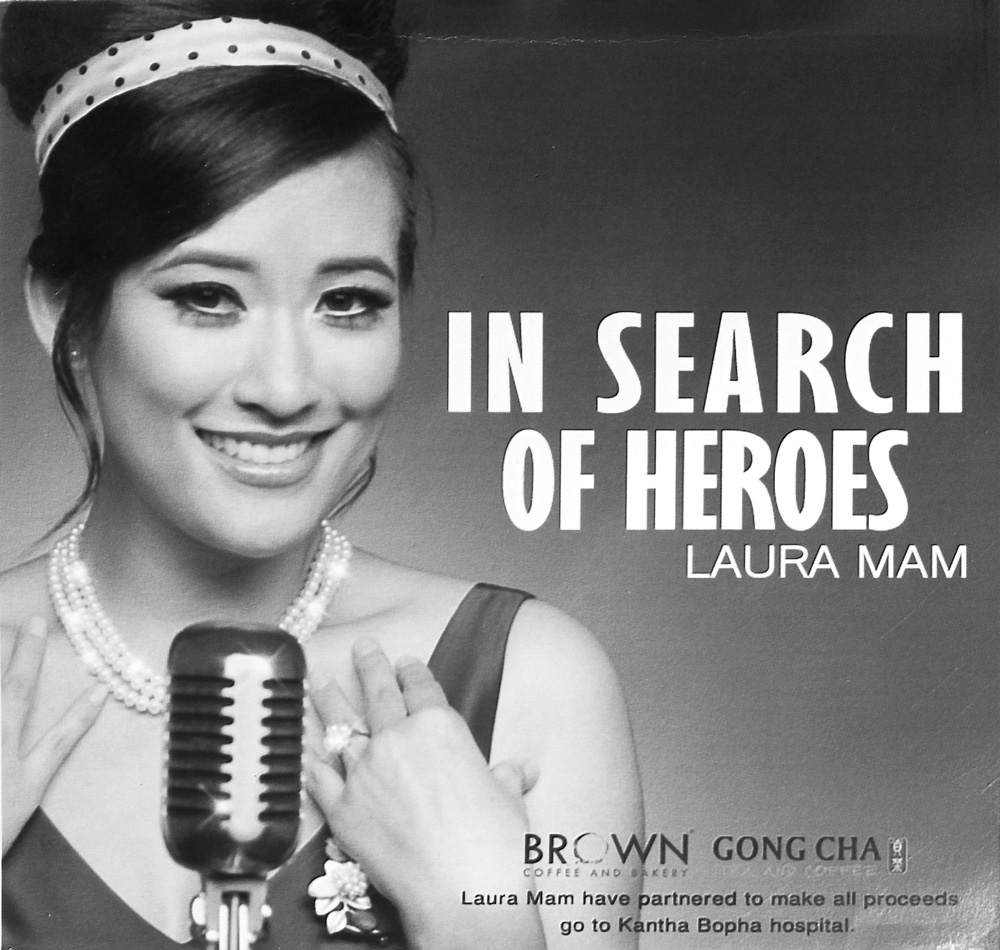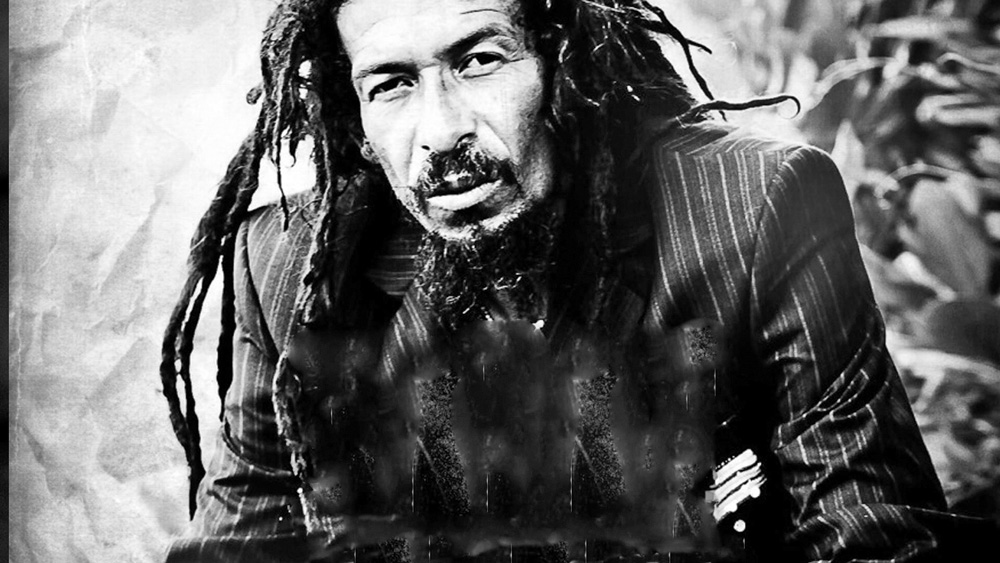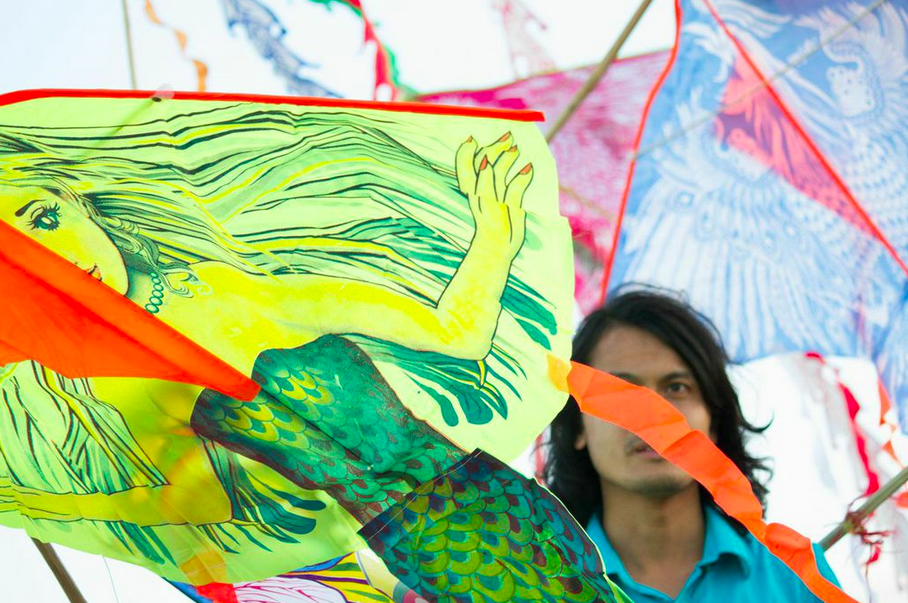In schools of Khmer classical dance, teachers watch in fear as a new generation of students look abroad in their search for identity
…..
KHMER CULTURE, rich and distinct, has developed over thousands of years. From the aura of grandiosity and omnipotence that surrounded King Jayavarman VII to the savoir vivre and artistic flair of the late Norodom Sihanouk, Khmer culture has been continuously reshaped by actors inside and out.
Yet for all its history and splendour, Khmer culture has also persisted under near constant danger. At times those threats have come from regional neighbours. At times it has boiled from a maelstrom within. And today, like centuries past, another national character continues to worry that Khmer culture, her culture, is at risk of disappearing.
Vong Metry’s big, vivacious eyes and time-worn visage convey strength and will power. They are qualities that have enabled her to become a revered Khmer classical dance teacher. As a young dancer, she trained at The Royal Palace and travelled the world, showcasing Cambodian dance in Korea, Singapore and France. She has performed for the likes of King Sihanouk and Princess Bopha Devi.
Sixteen years ago she started the Apsara Arts Association, which has now trained hundreds of students, many of whom are orphans, in classical and folkloric performing arts such as dance, music and drama.
Vong Metry opened AAA to combat what she sees as the demise of Khmer culture at the hands of foreign influences. She says the younger generation seems interested only in the pop culture of outsiders. “They’d rather spend their days watching silly Korean soap operas,” she says.
She speaks with the energy and determination of an idealistic spirit, using her slender, supple hands to accentuate her arguments.
A couple of students pass by as we talk in her small office. She graces them with a motherly smile and hurries them off to class, tenderly reprimanding a boy who is running late. Then she severs her maternal expression. “The organization is in trouble,” she says.

AAA has lost all of its external funding. Pressed with a dire economic panorama back home, foreign donors have pulled out and the association has been left with only one source of income: donations from visitors who come to watch classes.
“I am afraid that if things do not change we might have to close the school,” she says.
Vong Metry lowers her gaze and stares into her lap. She tells me that not-for-profit organizations cannot survive without overseas support. A meagre budget has forced her to cut staff and now only two teachers remain: her and her daughter, a young dancer whose round face resembles her mother’s. She says they receive no compensation for their work.
The sound of a roneat (Khmer xylophone) fills the room. I turn and find three small girls dancing apsara on stage. They move with mesmerizing grace and precision. Their tiny hands bend unnaturally backward as they simulate the planting of seeds into the earth.
Today, the centre is home to eight children, plus a dozen more who attend lessons. It costs nothing to live and learn here. Parents are happy to have a place where their children can stay while they work, generally the factory or selling food on the street.
Vong Metry’s daughter, Chhay Chanboramey, manages the association. Her mother encourages her to find a new profession, one that will provide a comfortable living. “She won’t listen to me,” Vong Metry says. “She loves the children too much and won’t leave the association.”
As mother and daughter struggle to rescue classical Khmer dance from global pop monoculture, a new question arises, looming menacingly over their organization and Khmer traditional dance all together: who will save the saviours?
Dance has always fascinated me. It is an attraction that goes beyond the purely aesthetic. No doubt: dance is beauty in motion. Anyone who has witnessed the swift, smooth movements of an experienced salsa couple or the strong yet graceful turns of a Flamenco dancer would agree.
But to us, the audience, dance can be more than just a vehicle of beauty. It can be a window into the hearts of the dancers and choreographers. By interpreting their dance, we can understand the emotions and passions that inspire them.
To better understand the culture of which I am now a part, I started my own personal quest to unveil the mysteries of the apsara dance. After all, the dance is central to Khmer culture and identity.
THE MEANING OF APSARA
I started my quest by contacting one of the foremost experts on the matter, John Shapiro, executive director and co-founder of Khmer Arts. I asked him for the contact of an apsara dancer.
Before giving me an answer, Mr. Shapiro quickly exposed a common misconception that many hold: there is no such thing as an apsara dancer. “The ‘apsara dance’ is just one particular dance within the art form known as Khmer classical dance. Saying ‘apsara dancing’ is the equivalent of saying ‘Swan Lake Dancing’ when talking about Russian ballet,” he said.
“So, as you see, I cannot introduce you to an apsara dancer, but I’d gladly give you the contact of a Khmer classical dancer,” Mr. Shapiro quipped.
Due to dance’s close relationship with the royal court, where dance was traditionally performed and where dancers lived and trained, Khmer classical dance is also known as the royal dance, or the Royal Ballet of Cambodia.
THE ORIGINS
On the walls of Angkor Wat, bas-reliefs depict semi-naked dancers in contorted body postures, their faces immortalized with a beatific smile. They are the apsaras.
As early as the 7th century, apsaras danced in the temples of the mighty Khmer Empire for ritualistic purposes. Their dances had the power to bring rain and gain godly favour for the king. These sorcerous dancers served a further, more crucial importance, too: they maintained the natural balance between feminine and masculine forces, acting as a nexus between the material and the intangible worlds.
Many historians and scholars trace the roots of today’s classical dance to those apsaras. They argue that those early Angkorean rituals evolved to become what is known today as Khmer classical dance. Others downplay the importance of that past, exalting instead the influence of Thai theatre, which played an important role in Cambodian dance during the 19th century. French colonialists, who reinvented portions of the dance based on bas-reliefs at Angkor Wat, also helped shape modern classical dance.
RESURRECTING AN ART FORM
The dawn of the Khmer Rogue marked the darkest episode in the history of classical dance. The Khmer Rogue sought to exterminate all dancers and artist. Nine in 10 classical dancers died; they took to the grave hundreds of moves and choreographies. The dance virtually disappeared.
After the downfall of the Khmer Rogue, the first efforts to resurrect dance took place in the refugee camps along the Thai border, where communities of dancers organically mushroomed. These refugees were the first ones to begin the seemingly impossible task of reforming the almost obliterated art. They worked hard to remember the lost moves and choreographies, and, little by little, the dance was infused with life again.
Sen Pich grew up in a small, cramped refugee camp on the Thai border. As a child, she first witnessed Khmer classical dance while playing with friends. A beautiful woman stood in front of a small gathering of children and teenagers. The dancer’s feet moved swiftly around the sandy floor; her hands adopted enigmatic gestures. Sen Pich was instantly captivated by her gracefulness, and, as soon as she returned home, the child asked her mum to join dancing lessons.
At the age of 7, Sen Pich began studying classical dance at Krousar Thmey, a humanitarian NGO working in the camps. As a teenager, she resettled to Phnom Penh and became a dancer.
The life of a dancer wasn’t a lucrative one, and to make a living, Sen Pich had to supplement her income working as a dental assistant and English teacher. Nowadays, at the age of 27, she runs her own school, where she teaches Khmer classical dance, in particular, the apsara dance.
THE DANCE

Khmer classical dance is characterized by the precise movements of its performers. Within those movements, the hands take centre stage. They are the medium to convey not only emotion, but also the meaning of the story. Hands that bend impossibly in every direction are the hallmark.
There are four hand gestures, and a performer’s hands are always held in one of these four forms. They represent the parts of a plant: the leaf, the flower, the tendril and the fruit. Combined, these gestures create an alphabet through which the dancer expresses feelings. The dancer also uses these gestures to illustrate the meaning of the choral chants. For example, a leaf held above the eye points to weeping; near the heart, shows anger; resting on the chest indicates shyness.
Khmer classical dance is also full of conventionalised movements: pre-established routines used widely throughout the art form to represent a specific situation. For example, there is the standard love duet, which starts with the female spurning the advancements of the male. As she retreats, she follows a specific set of upper body movements while her feet draw a particular pattern on the floor.
After the rebuff, the male returns to try his luck one more time. This time the female dancer refuses him with a gentle pinch. Eventually, she accepts his invitation and together they engage in a dance in which she is always on his right. Conventionalised movements such as this one are used to express a wide array of emotions and situations, from falling in love to engaging in combat.
THE TRAINING
Mr. Shapiro’s wife, Sophiline Cheam Shapiro, is one of the most famous choreographers in the nation and her work is internationally renowned. Her company, Sophiline Arts Ensemble, rose to prominence by producing world-acclaimed pieces of classical choreography that incorporate elements of contemporary dance.
Sao Phirom is a lead dancer at the Sophiline Arts Ensemble. She explains that entrance into either of the two major dance schools, The Royal University of Fine Arts or the Secondary School of Fine Arts, is extremely competitive. Only the most skilful dancers are awarded a spot.
Skill alone, however, is not enough. Beauty is also of great importance. The admissions panel prizes symmetrical faces, seductive facial features and tall, slender bodies.
The training is rigorous. Students practice three to five hours each morning, in addition to attending regular school in the afternoon. The best students, those who will become the lead dancers, join the teacher at her home for private lessons in the evening.
A typical class is 30 to 40 students. The training starts with one hour of stretching, an important part of the lesson that helps develop the flexibility required for dancing. Afterward, students watch as a teacher’s assistant demonstrates the pattern of the day. Then it’s the students turn to mimic the lesson.
While students practice, the teacher goes around fixing body postures, carefully adjusting the position of each student until it is perfect. If an elbow is so much as a centimetre too low, the teacher pushes it up until it is in the right place. Through constant repetition, the student’s body naturally incorporates the movement into its repertoire. Body memorization becomes, in this way, the basis of the learning experience, and makes the whole enterprise an almost subconscious endeavour.
In a Cambodian dance class, the teacher is the undisputed commander, wielding absolute control. The students must follow her instructions to a T. There are no questions asked and no input is expected from the students. Complaints are unheard of. The objective is to pass on the art exactly as remembered by the teacher. Reverence for the master, the carrier of the secrets of the art, is absolute. The knowledge the teacher passes on is not based on books or academic material. Rather, the teacher shares with the students the fruits of her own self-discovery and experience.
Sao Phirom tells me that physical punishment was common during her days as a dance student. Her teacher would walk around with a bamboo stick and strike disobedient or underperforming pupils. Physical punishment does not seem out of place in such a demanding, teacher-centred system. Even nowadays, this practice endures.
THE FUTURE
Khmer classical dance faces an uncertain future. Lack of teaching materials, equipment and funds are only some of the obstacles. Quality teachers are difficult to attract with meagre salaries, and the teaching standard is not what it used to be, say those involved. Enrolments at RUFA and the Secondary School of Fine Arts drop every year.
Fewer students mean fewer supporters. And the overall lack of support – and most crucially, lack of funding – points to a dwindling interest in the preservation of traditional culture and threatens the survival of the art.
For the time being my journey ends at a BKK restaurant, where I attend a classical dance show. It is not my first, but it is the one I feel most prepared for. This time I can make out the meaning of some of those enigmatic hand gestures.











